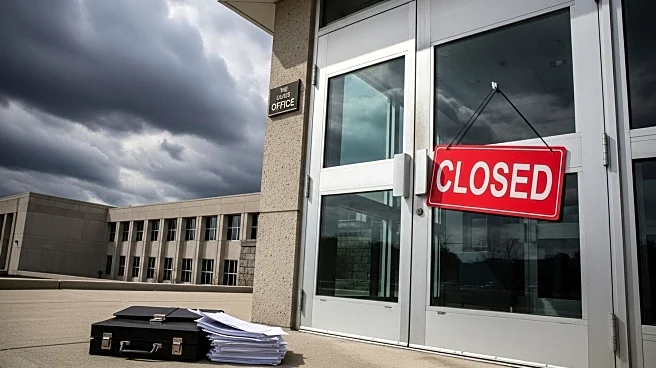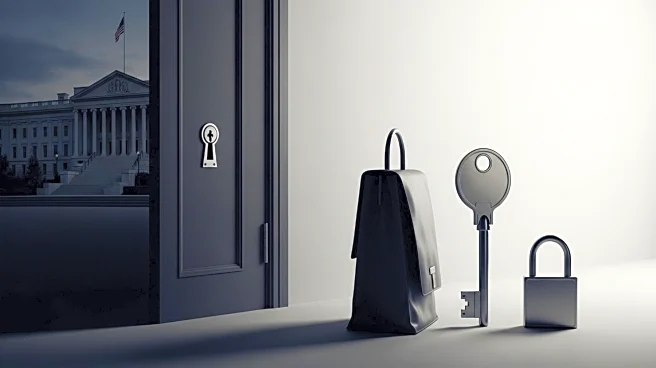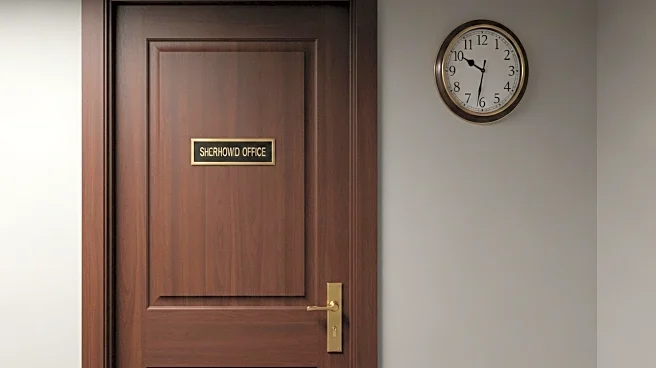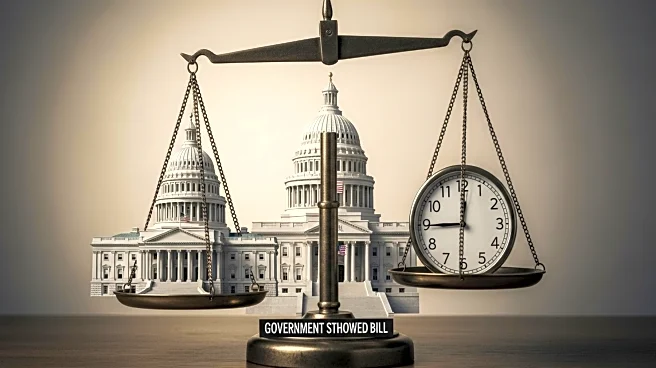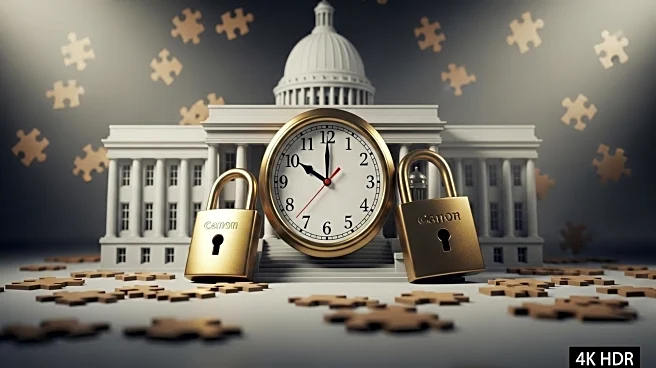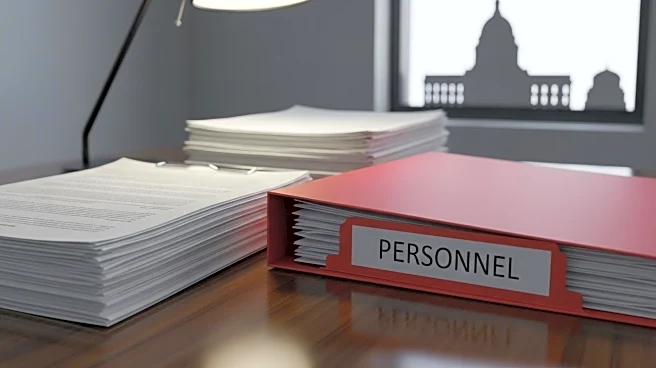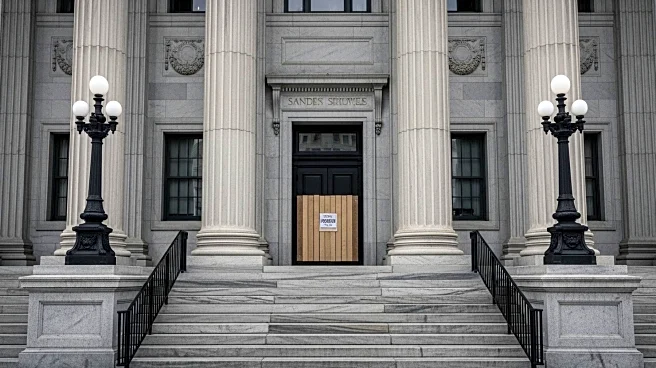What is the story about?
What's Happening?
The U.S. federal workforce has seen a significant reduction, with approximately 100,000 employees officially leaving the government payroll. This development follows the Trump administration's deferred-resignation plan, which allowed employees to resign months ago while continuing to receive their salary and benefits until the end of the federal fiscal year on September 30. The program had 154,000 federal employees sign up, with two-thirds remaining on the books until the buffer expired this week. The administration aims to downsize the federal bureaucracy, with expectations of further reductions through voluntary resignations, hiring freezes, and layoffs. During the current government shutdown, around 750,000 people have been temporarily furloughed, and President Trump has indicated that some may not return to their positions.
Why It's Important?
The reduction in the federal workforce is part of a broader strategy to overhaul the federal system, targeting what President Trump has described as 'unaccountable' employees. This downsizing has significant implications for civil servants, disrupting operations and shrinking public services. The layoffs and buyouts are occurring amidst a year already marked by job cuts in other sectors such as finance and manufacturing, contributing to a challenging job market. The influx of former federal workers into the job market has increased competition for positions, particularly in white-collar roles, where hiring has slowed. This trend could lead to a negative impact on employment statistics, with furloughed workers potentially being listed as unemployed in upcoming reports.
What's Next?
The federal workforce reduction is expected to continue, with more employees potentially leaving through layoffs and hiring freezes. The crowded job market may pose challenges for former federal workers seeking new employment, as competition for available positions intensifies. The upcoming employment reports may reflect the impact of these changes, potentially showing increased unemployment figures. Additionally, the ongoing government shutdown could exacerbate the situation, leading to further instability and stress for affected workers. The administration's efforts to streamline the federal system may continue to face scrutiny and debate regarding the long-term effects on public services and employee morale.
Beyond the Headlines
The reduction in the federal workforce raises ethical and cultural concerns about the treatment of civil servants and the stability of public services. Many employees feel forced out, despite the voluntary nature of the resignation program, highlighting the tension between political agendas and employee welfare. The stress and instability caused by these changes may have long-term effects on the mental health and well-being of affected workers. The situation also underscores the broader challenges facing the U.S. labor market, as industries across the board grapple with job cuts and economic uncertainty.
AI Generated Content
Do you find this article useful?



